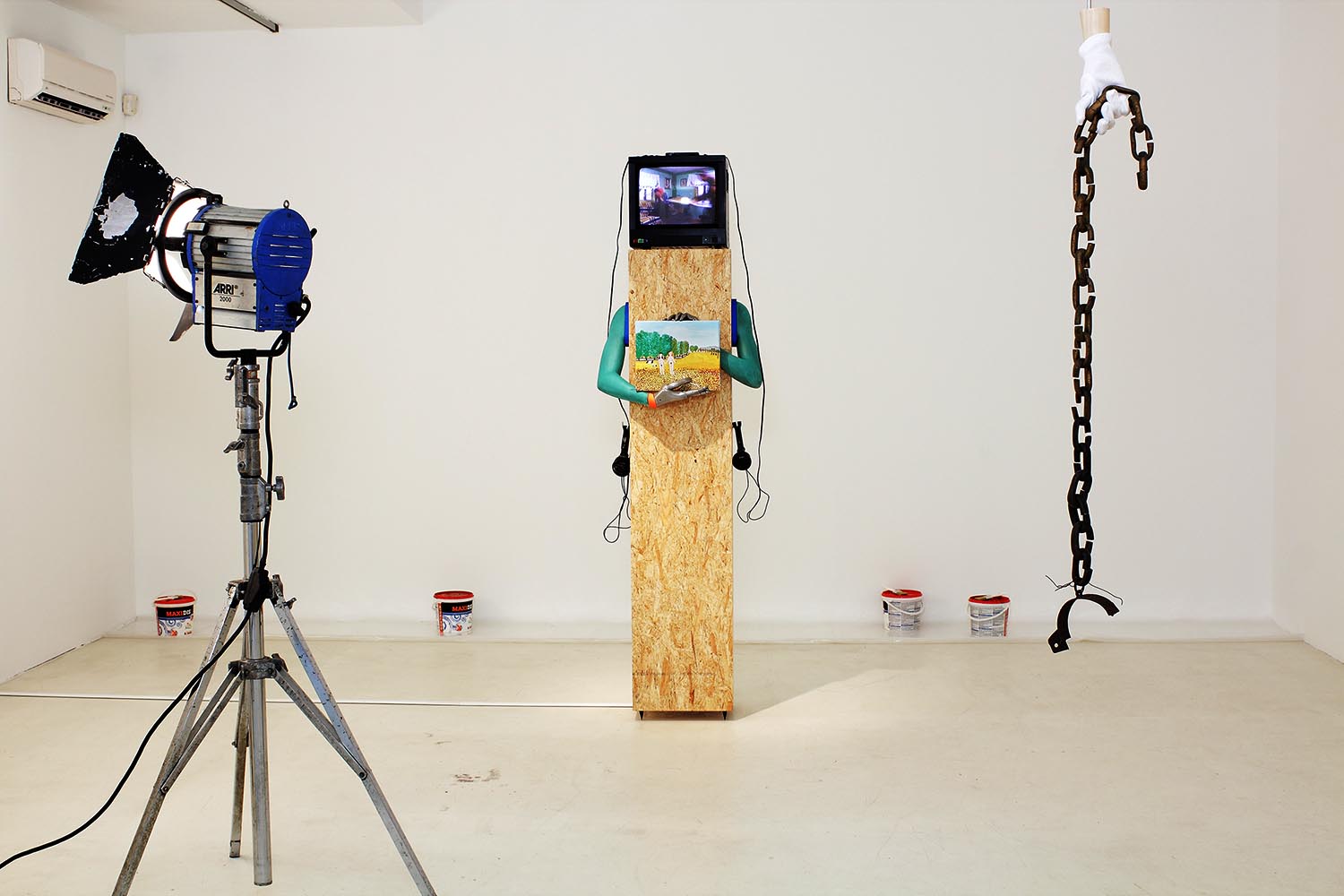The Museum of Contemporary Art Belgrade was opened in 1965 at its current location in the area of the city known as New Belgrade. Part of the architectural plan from the 1960s for that part of the city, which is on the riverbanks of the Sava River, was to build a museum park with a number of museums in the area. The master plan was never realized. More recently, the Museum of Contemporary Art was closed for renovations for ten years and reopened in October of 2017 after a decade full of scandals, misguided expectations, failed promises, and deep frustration. Simultaneously, the National Museum had also closed for renovation, greatly limiting the possibilities for a generation of young people to experience museum collections and exhibition programs.
MoCAB’s reopening exhibition was titled “Sequences: Art of Yugoslavia and Serbia from the collection of the Museum of Contemporary Art,” curated by Dejan Sretenović, Zoran Erić, and Mišela Blanuša. The exhibition’s title reveals the sense of historical burden and sociopolitical transformation that the museum still harbors — specifically the legacy of Yugoslavia, which constructed the museum’s narrative until its fall in the 1990s yet remains present in its reopening. The exhibition is divided into eighteen mini-exhibitions (or sequences) across the museum’s five levels, adopting a chronological approach to grouping artists and artworks. Upon entering the museum hall — and encountering a very small, seemingly unfinished reception table on the left-hand side — visitors move into the exhibition space without much preface. The exhibition opens with the painting Funeral in Sicevo (1905) by Nadezda Petrovic (1873–1915), one of the best-known female modernists of the bourgeois modernism “sequence.”

The curatorial text argues that the proposal to create sequences is an attempt to challenge the traditional or permanent display of the collection, though in the exhibition this strategy seems to remain in-between. Some highlights of the exhibition are the practices of artists affiliated with Zenitism, an avant-garde movement from the 1920s and ’30s, that coalesced around the magazine Zenit (The Pinnacle), which was published between 1921–26 in Belgrade and Zagreb. The artists forming the Surrealist branch in Belgrade, who were active in early 1930s and followed the legacy of the Parisian Surrealists, created an body of work during a short time span. Marko Ristić (1902–1984), who presented documentation of a so-called Surrealist Wall, was described by curator Sretenović as the earliest installation in this part of the world. However, very little information was provided about the artwork itself, as was the case for many other works in the exhibition, except for basic captions that did little to provide greater context for the viewer.
The strongest works on display sat within the New Art Practice movement (with whom Marina Abramović began her career), which showcased canonical works by lesser-known contemporaries as well as more renowned artists, such as Neša Paripović and Raša Todosijević. The top floor of the exhibition taps into the 1990s fall of Yugoslavia with a number of works that offer critical reflections on the political regime and trauma experienced at that time. In this way, the exhibition seeps into the present moment with a nostalgic take on works by local and international artists within the collection.

The exhibition gives special attention to photography, partly due to the museum’s policy on filling acquisition gaps related to rethinking the importance of the medium. A photographic sequence titled “Photography and Society” includes documentary-style photographs from the 1960s, while another sequence, “New Wave in Photography,” looks closely at the practice of photography in Yugoslavia throughout the 1980s.
The renovated interiors and the museum’s green surroundings comfortably match its modernist architecture. The curatorial decision to leave the glass windows uncovered allows the landscape around the museum to feel present while walking through the exhibition. This peek into the outside world creates a special experience in the space, providing a much-needed pause as visitors traverse such a historically loaded exhibition.
Regrettably, the exhibition guidebook provides very little information about individual works. The museum’s lack of a café or areas where people can stay for extended periods of time renders it a little old-fashioned, which makes me wonder what it might have meant if the museum were to have reopened with just an empty space, allowing people to simply enter and be in the space that they were barred from for so long. Allowing the audience to rethink the institutional potential of the site, and to consider its future together with the museum team rather than simply receiving their own artistic and cultural legacy without participation, seems important, if not necessary. , and the 2019 Marina Abramović retrospective exhibition was negotiated by the Serbian Premier rather than the curatorial team, pointing to the open-ended nature of the museum’s future direction.
These developments reflect this period of transition in Serbia to a market-based economy, a process of privatization that is a shadow of the ever-growing trend toward capitalism in this part of the world. For as Chto Delat claimed in their work in the exhibition: “Capitalism is part of human nature.”


